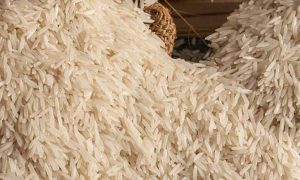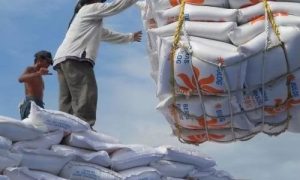Exclusive: On El Nino fear, India’s rice export ban may continue till at least November: Government source

Behind New Delhi’s stance of keeping the ban on some rice exports until November at the least is not only to keep a check on domestic prices but also to ensure sufficient availability of the grain
India’s ban on export of non-basmati white rice may continue till at least November as the country remains apprehensive about the impact of El Nino on the sowing of kharif crops, a government official aware of the matter said.
“There are a lot of predictions on how El Nino might impact Kharif crops; the government has erred on the side of caution, so, in case El Nino has an impact, the government would have already taken action,” the official told Moneycontrol, on condition of anonymity.
Any decision on rolling back the prohibition can only be considered after the sowing season for Kharif crops ends, enabling the government to assess the yield for the current year, the official said. He added that a decision to lift the ban would be based on the performance of the monsoon crops.
Behind New Delhi’s stance of keeping the ban on some rice exports until November at the least is not only to keep a check on domestic prices but also to ensure sufficient availability of the grain, the official added. As of August 7, retail prices of rice had risen 10.63 percent on year, whereas in the wholesale market, they had registered a spike of 11.12 percent in the comparative period.
Apart from the prohibition on certain rice exports from July 20, the Indian government has also been selling rice under the Open Market Sale Scheme (OMSS) to bring down prices of essential commodities. It has lowered the reserve price of the grain to get a better response in the auctions.
The El Nino overhang
In its monthly economic report for June 2023, the Finance Ministry highlighted that the risk of supply-side shocks, including El Nino, warranted a guarded approach by the Reserve Bank of India (RBI), as well as the government, for an “appropriate and timely policy response.”
El Nino, which occurs every three to six years, is a phenomenon of abnormal heating up of the ocean surface, which triggers a change in wind patterns and, in turn, impacts weather across the world. The US government’s National Oceanic and Atmospheric Administration has indicated the possibility of El Nino conditions developing this year.
On July 31, the Indian Meteorological Department (IMD) said that India is expected to receive below-normal rainfall in August. Currently, weak El Nino conditions prevail over the equatorial Pacific region and the latest models indicate that these conditions are likely to intensify further and continue up to early next year.
Though sowing of rice has picked up since last week, the risk of output being lower remains due to the uneven distribution of rainfall in the country. While heavy rains have damaged newly planted crops in Punjab, Haryana, Himachal Pradesh and Uttar Pradesh, a rainfall deficit has delayed planting of rice in West Bengal.
Along with the risk of El Nino, India is also grappling with high retail inflation, which was at a 15-month high of 7.44 percent in July, led by a rise in prices of vegetables and key staples such as pulses, spices, and cereals.
















